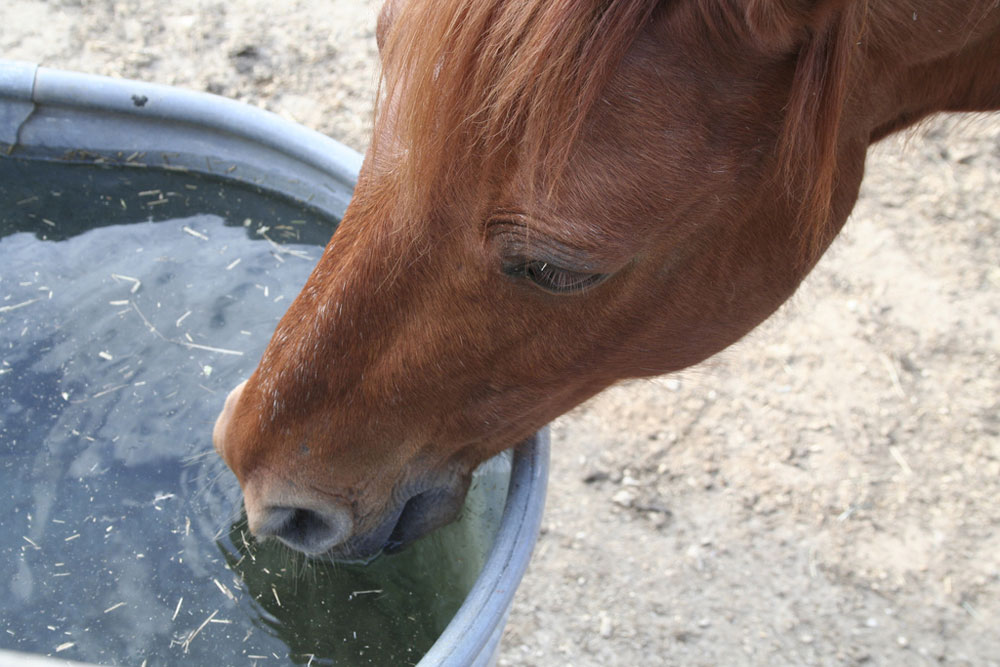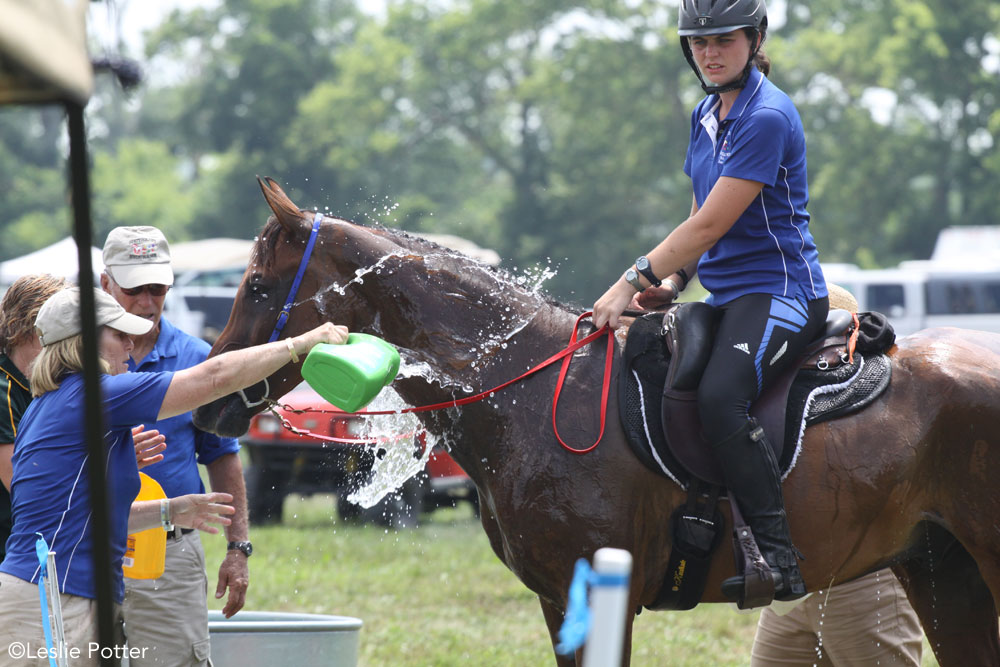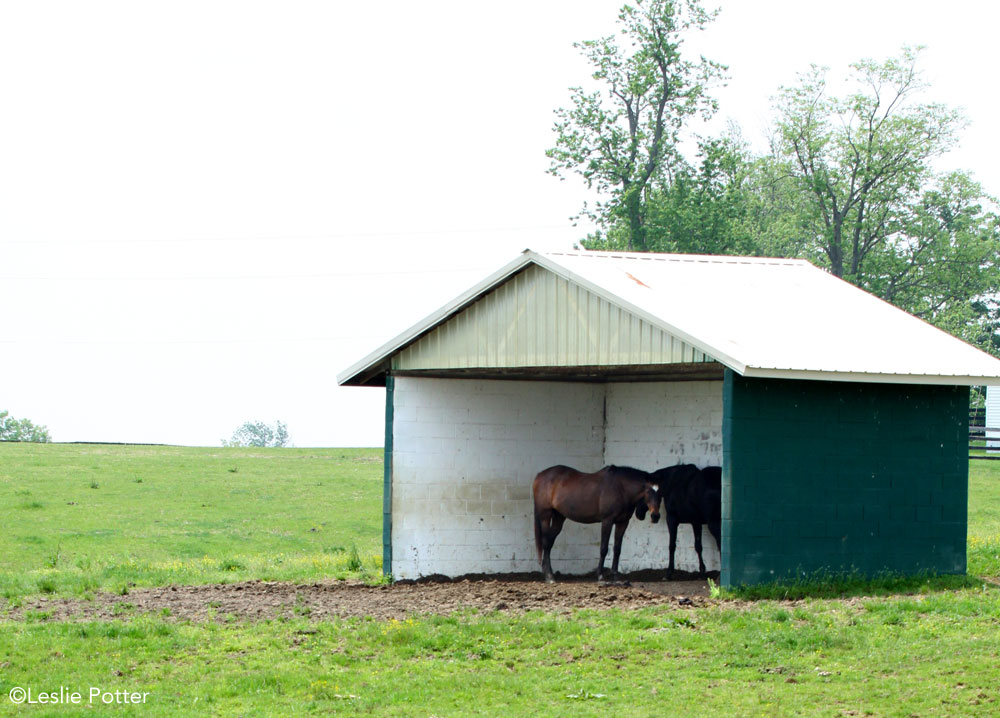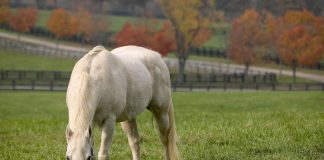
While you’re enjoying the first trail rides and horse shows of the season, remember that health problems resulting from heat can sneak up on you and your horse. Take precautions to avoid heat-related health problems.
1. Know the signs of heat exhaustion. In horses, symptoms include weakness, stumbling, increased temperature (higher than 102 F) and elevated pulse or respiration. In serious cases, a horse may stop sweating (anhidrosis). To help a heat-stressed horse cool down, offer water in small amounts, hose him down with cool water, keep him out of the sun and, if possible, in front of a fan. If his symptoms persist, call your vet.
2. Heat exhaustion affects humans, too. Symptoms include feeling faint or lightheaded, nausea, skin that is cool and moist to the touch, and a rapid, weak heartbeat. If a rider in your group is experiencing these symptoms, get her out of the sun and in front of a fan or air conditioner, if possible. Remove her helmet and loosen clothing and have her drink water or a sports drink. Don’t just let someone experiencing heat exhaustion “ride it out.” Heat exhaustion is easily remedied, but if left untreated, it can advance to life-threatening heat stroke.

3. Schedule your rides to avoid intense heat. Early morning hours tend to be the coolest, making them ideal for more serious schooling sessions. The sun and heat levels are at their most dangerous from 10:00 am to 4:00 pm. If the afternoon is your only time to ride, stick to shady areas or a well-ventilated indoor arena.
4. If you compete, you don’t have a choice about when you ride. To ease the heat, wait until you’re about to enter the ring before putting on your show coat. Find a shady area to stand with your horse before your class. Have a friend bring a bottle of water ringside. A judge may waive the requirement to wear coats for English riders when the temperature soars. If she does, take advantage of it.
5. Cool your horse out properly. There’s a persistent myth that it is dangerous to let your horse drink when he is very hot, when in fact it can be very harmful to withhold water. If your horse is hot and breathing heavily after a workout, let him take a few sips of water, then walk him for a minute and let him have another drink and continue this way until he is cooled out.

6. Another myth is that you should never spray a hot horse down with cold water. The fact is, top-level endurance riders and eventers douse their horses down with ice-cold water immediately after they finish a ride to bring the body temperature down to a safe level. However, using cool water instead of cold is generally more comfortable for your horse, so if you aren’t headed into the vet check after a 100-mile ride or an advanced cross-country course, you can use a more moderate temperature to cool him down after a workout.
7. Use sunscreen of at least SPF 15 and reapply throughout the day. Wearing a hat or helmet with a visor will help protect your scalp and face, two very sun-vulnerable areas. Horses with white on their muzzles are prone to burns as well, so make sure to use sunscreen there as well.
8. Hot weather brings out the bugs. Use plenty of insect repellant on yourself and fly spray on your horse, especially if you’re headed out into the woods. You can put a fly mask on over your horse’s bridle to protect his face from flies while riding. Just make sure to take it off if you ride after the sun goes down.
9. The days of riding in heavy jeans and sweat-soaked t-shirts are over. Hot weather riding apparel is now widely available and affordable. Manufacturers now offer lightweight riding pants, moisture-wicking shirts, ventilated helmets and even perforated half chaps that allow for better air circulation.

10. Your pastures need to have sufficient shade for all of the horses that live there. That can be from a shelter or from trees as long as the shade is available as the sun moves throughout the day. Check the pasture water daily to make sure it is clean and hasn’t become too hot if the trough is out in direct sunlight. If your horse is stabled during the day, keep the windows and doors open for ventilation, or mount a box fan on your horse’s stall to improve air circulation. Just make sure the wire is out of reach of all horses.
Further Reading
Electrolyte Essentials
Too Hot to Trot?
Tips for Safe Horse Transport During Hot Weather






Great info! Thanks!
YOU CAN NEVER HAVE TOO MANY TIPS FOR KEEPING YOUR HORSE, AND YOURSELF, SAFE! THANKS!
Great tips. Now if only we would get some nice warm weather!
Thanks for the tips. I agree with below, we have everything, now where’s the warm weather we need?
good tips!!
Good reading and I copied it for the 4-Hers to read.
great
Excellent article with great tips. Thanks.
thanks this is helpful.
Good but these tips are pretty common sense.
nice article just use some sense when out in the heat
I always wait to ride til evening cause I feel bad making my horse work in the heat. 🙂
Great advice.
I could not count the know it all’s I have been around over the years who insist that “COLD WATER IN HOT WEATHER WILL KILL ANY HORSE OR COW” ! To hear them say it the horse will just drop dead almost immediately. My common sense told me it was absurd and made me question their intelligence. Thank You so much for this post.